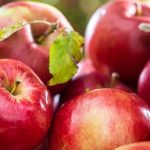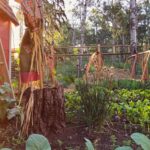One of the most fulfilling and rewarding hobbies for many individuals is cultivating their own vegetable garden. From the convenience of having fresh produce at your fingertips to the therapeutic benefits of tending to plants, there are countless reasons why more and more people are turning to home gardening. In this article, we will explore the popularity of vegetable gardening and delve into the top vegetable plants that people commonly buy for their gardens.
With concerns about food security and sustainability on the rise, many individuals are opting for growing their own vegetables as a way to take control of their food sources. But besides these concerns, there are numerous benefits associated with growing your own vegetable plants. Not only does it provide a sense of accomplishment, but it also promotes a healthier lifestyle by ensuring access to organic and nutritious produce.
So, what vegetable plants do people buy for their gardens? The answer varies based on personal preference and climate, but some choices tend to be quite popular across different regions. Whether you’re an experienced gardener or just starting out, understanding which vegetable plants are in demand can help you make informed decisions when planning your garden.
Stay tuned as we explore the top 5 most sought-after vegetable plants for home gardens and provide tips for purchasing and planting these vegetables even if you’re a beginner.
Benefits of Growing Your Own Vegetable Plants
Growing your own vegetable plants can offer numerous benefits for both your health and the environment. One of the key advantages of growing your own vegetables is the ability to have access to fresh, organic produce right from your backyard.
This can lead to a healthier diet, as you can avoid the chemicals and pesticides often found in store-bought produce. Additionally, growing your own vegetables can also save you money in the long run, as you won’t need to purchase expensive produce from the grocery store.
Health Benefits
By consuming homegrown vegetables, individuals can ensure that they are consuming nutrient-dense foods that have not been tainted by harmful chemicals. Studies have shown that homegrown vegetables tend to have higher levels of vitamins and minerals compared to commercially grown ones. Furthermore, gardening itself is a physical activity that allows individuals to stay active and spend time outdoors, which can contribute to overall well-being.
Environmental Benefits
In addition to personal health benefits, growing your own vegetable plants can also have positive impacts on the environment. By reducing the demand for commercially grown produce, individuals can help lower their carbon footprint and reduce pollution associated with industrial agriculture. Home gardens also promote biodiversity by providing habitats for beneficial insects and wildlife. Lastly, growing your own vegetables reduces reliance on plastic packaging and transportation emissions associated with store-bought produce.
Top 5 Most Popular Vegetable Plants for Home Gardens
When it comes to starting a home garden, choosing the right vegetable plants is crucial for a successful and bountiful harvest. While there are countless options to choose from, some vegetable plants stand out as the most popular choices for home gardens.
Tomatoes
One of the most popular vegetables for home gardens, tomatoes come in various sizes, colors, and flavors. They are relatively easy to grow and can thrive in both containers and traditional garden beds. Some popular varieties include Beefsteak, Cherry, and Roma tomatoes.
Peppers
Whether it’s bell peppers, chili peppers, or sweet peppers, these vegetables are also highly sought after by home gardeners. With vibrant colors and different levels of spiciness, peppers add flavor and variety to any dish. They require plenty of sunlight and well-drained soil to thrive.
Zucchini
Zucchini is a favorite choice for many home gardeners due to its productivity and versatility in cooking. It is easy to grow and produces an abundance of fruit throughout the growing season. Zucchini plants thrive in warm temperatures and fertile soil.
Cucumbers
Cucumbers are another popular choice for home gardens because they are refreshing, low in calories, and easy to grow. There are different types of cucumbers such as slicing cucumbers and pickling cucumbers, each with its own unique characteristics. They do well when given adequate water and support for climbing.
Lettuce
Lettuce is a staple in many salads and serves as a healthy addition to any meal. Home gardeners love growing lettuce because it is fast-growing and can be continually harvested throughout the season. Whether it’s leaf lettuce or head lettuce, they prefer cooler temperatures with partial shade during the hottest part of the day.
These top 5 most popular vegetable plants offer a great starting point for anyone looking to start their own home garden. By considering factors such as climate suitability, space available, and personal preferences, one can make informed decisions on which vegetable plants to grow for a successful harvest.
Factors to Consider When Choosing Vegetable Plants for Your Garden
When choosing vegetable plants for your garden, there are several factors to consider in order to ensure a successful and bountiful harvest. One important factor to think about is the climate in your specific region. Certain vegetable plants thrive in cooler temperatures, while others do well in warmer climates. It’s crucial to select vegetable plants that are well-suited for the weather patterns and conditions of your area.
Another factor to consider when choosing vegetable plants for your garden is the space you have available. Some plants, such as zucchini and cucumbers, require a lot of room to spread out, while others, like lettuce and spinach, can be grown in smaller spaces or even containers. Assessing the size and layout of your garden will help you determine which vegetable plants are the best fit for your growing area.
Additionally, it’s important to consider the amount of time and effort you’re willing and able to devote to caring for your vegetable plants. Some plants may require more maintenance, such as staking or regular pruning, while others may be low-maintenance and easy to grow. Understanding how much time and effort you can realistically dedicate to tending to your garden will help you choose vegetable plants that align with your gardening capabilities.
| Factors | Considerations |
|---|---|
| Climate | Choose plants suited for local weather conditions |
| Space | Determine if garden has enough room for specific plant types |
| Maintenance | Consider how much time can be dedicated to caring for different plant varieties |
How to Care for Your Vegetable Plants to Ensure a Bountiful Harvest
Once you have chosen the perfect vegetable plants for your garden, it is essential to know how to take care of them properly in order to ensure a bountiful harvest. One of the most important factors in caring for your vegetable plants is providing them with the right amount of water, sunlight, and nutrients. Different vegetables have different needs, so it is crucial to research the specific requirements of each plant you choose to grow.
Proper watering is essential for the health and growth of your vegetable plants. Overwatering can lead to root rot and other diseases, while underwatering can cause stunted growth and poor fruit development. It is important to monitor the moisture levels in the soil and adjust your watering schedule accordingly. Additionally, providing adequate sunlight is crucial for photosynthesis and overall plant health. Most vegetable plants require at least 6-8 hours of direct sunlight per day.
In addition, fertilizing your vegetable plants with the right nutrients is key to ensuring a successful harvest. Different types of vegetables have different nutritional needs, so it is important to use fertilizers that are specifically formulated for edible crops. Organic fertilizers are an excellent choice for vegetable gardens as they provide essential nutrients while also improving soil structure and promoting beneficial soil microorganisms.
| Care Tips | Details |
|---|---|
| Watering | Monitor soil moisture levels; adjust watering schedule accordingly. |
| Sunlight | Most vegetables need at least 6-8 hours of direct sunlight per day. |
| Fertilization | Use organic fertilizers specific to edible crops. |
Different Varieties of Each Popular Vegetable Plant to Consider
When it comes to starting a vegetable garden, it’s important to consider the different varieties of each popular vegetable plant. Each type of vegetable plant comes with its own unique characteristics and flavors, so exploring the different options can add variety and excitement to your garden. Let’s take a look at some of the most popular vegetable plants for home gardens and the various varieties available for each.
Tomatoes are one of the most popular vegetable plants grown in home gardens, and there are countless tomato varieties to choose from. Some common varieties include cherry tomatoes, beefsteak tomatoes, heirloom tomatoes, and roma tomatoes. Each variety offers a distinct taste, size, and color, allowing gardeners to experiment with different types based on their preferences.
Another favorite among home gardeners is the cucumber plant. There are several cucumber varieties available, including slicing cucumbers, pickling cucumbers, and specialty or novelty cucumbers. Different varieties may have varying shapes, textures, and flavors, offering an array of options for fresh salads or pickling.
Carrots also come in multiple varieties that can vary in size, shape, and flavor. Some popular carrot types include Nantes carrots, Danvers carrots, Chantenay carrots, and Imperator carrots. Each variety has its own unique characteristics that cater to different preferences for taste or culinary use.
Exploring the various types of each popular vegetable plant can be an exciting journey for gardeners looking to add diversity to their gardens. It allows for experimentation with different flavors and appearances while providing a more enriching gardening experience overall.
Tips for Purchasing and Planting Vegetable Plants for Beginners
When starting a vegetable garden, it is essential for beginners to select the right plants and properly plant them to ensure a successful harvest. Here are some tips for purchasing and planting vegetable plants for beginners:
- Choose easy-to-grow vegetables: For beginners, it is best to start with vegetables that are low-maintenance and easy to grow. Some popular options include tomatoes, bell peppers, zucchini, lettuce, and green beans.
- Consider your climate: Before purchasing vegetable plants, consider the climate of your region. Ensure that the plants you choose are suitable for the temperature and growing conditions in your area.
- Buy healthy seedlings: When purchasing vegetable plants from a nursery or garden center, make sure to select healthy seedlings. Look for vibrant green leaves, strong stems, and no signs of pests or diseases.
Once you have purchased your vegetable plants, it’s time to plant them in your garden. Here are some tips for planting vegetable plants:
- Prepare the soil: Before planting your vegetable plants, prepare the soil by adding compost or organic matter to improve its fertility and structure.
- Follow spacing guidelines: Each type of vegetable plant has specific spacing requirements. Always follow the recommended spacing guidelines on the plant tag or seed packet to ensure proper growth.
- Provide adequate water and sunlight: After planting your vegetable plants, make sure they receive enough water and sunlight according to their individual needs. Consistent watering and sunlight are crucial for healthy plant development.
By following these tips for purchasing and planting vegetable plants, beginners can set themselves up for a successful gardening experience. Starting a vegetable garden can be rewarding and enjoyable, providing an abundant supply of fresh produce right at home.
Conclusion
In conclusion, starting a vegetable garden can offer numerous benefits to individuals and their communities. The act of growing one’s own food not only promotes a healthier lifestyle but also contributes to environmental sustainability. As discussed in this article, the top 5 most popular vegetable plants for home gardens – including tomatoes, peppers, cucumbers, lettuce, and carrots – are relatively easy to care for and can yield a bountiful harvest when given proper attention.
Furthermore, the process of selecting and planting vegetable plants should be approached with consideration for factors such as climate, soil conditions, and available space. By taking these elements into account and following recommended care practices, even beginners can experience success in their gardening endeavors. Additionally, exploring different varieties of each popular vegetable plant can introduce diversity and excitement to the garden while offering an opportunity to experiment with new flavors and textures.
In essence, whether you are a seasoned gardener or a novice looking to explore the world of vegetable gardening for the first time, it is important to remember that cultivating your own vegetables can be a rewarding and fulfilling experience. Not only does it provide access to fresh produce right at your fingertips, but it also fosters a deeper connection with nature and encourages healthy eating habits.
So take this as an invitation to start your own vegetable garden today and enjoy the many benefits it has to offer for both your well-being and the environment.
Frequently Asked Questions
What Vegetables Should Every Garden Have?
Every garden should have a variety of vegetables to provide a well-rounded selection for harvesting. Some essential vegetables include tomatoes, peppers, lettuce, carrots, zucchini, cucumbers, and green beans. These vegetables are versatile and can be grown in different climates and spaces.
What Vegetables Sell for the Most?
Vegetables that sell for the most typically include specialty or gourmet varieties such as heirloom tomatoes, artichokes, microgreens, exotic mushrooms, and colorful bell peppers. These vegetables are often sought after by chefs and food enthusiasts willing to pay a premium for unique or high-quality produce.
What Do People Buy When Starting a Garden?
When starting a garden, people tend to buy basic tools and supplies like shovels, rakes, gloves, soil amendments (compost or fertilizer), seeds or seedlings of popular vegetables like tomatoes and peppers, watering cans or hoses, and gardening books or guides for beginners. Additionally, some may invest in raised beds or containers for growing their plants.

If you’re looking to get into vegetable gardening, or are just looking for some tips on how to make your current garden better, then you’ve come to the right place! My name is Ethel and I have been gardening for years. In this blog, I’m going to share with you some of my best tips on how to create a successful vegetable garden.





